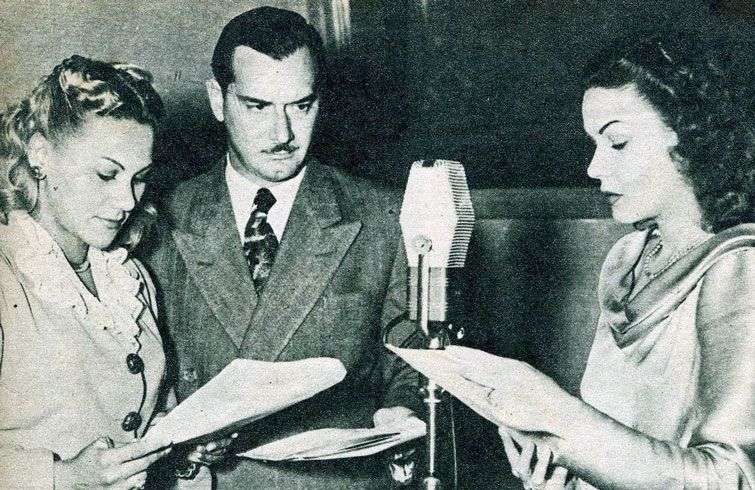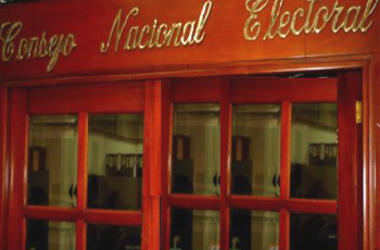How much ingenuity, how much imagination is needed to make radio. It seems simple, but it is not. Many people, some known, others anonymous, allow the miracle to work so that, day by day, from a small receiving device, or today, even from a computer or a mobile device —through an application or the Internet—, the sounds, the music, the words of apparently invisible beings, even the silence. It is enough to move a button, or slide your finger on the touch screen of a cell phone, to change from one station to another, to travel through a trail of possibilities.
You choose and the program of your choice is heard immediately. It can be a concert, or the news, or a variety magazine, or a sports broadcast, or a drama space. Or much more. The radio seems to always be there, waiting for its listeners, no matter if it’s day or night, if it’s pouring rain or if the morning gives us a splendid sun. It has accustomed us to this for a long time, since the North American station KDKA went on the air more than a century ago, in the already distant 1920. That day, thanks to the magic of sound and the advancement of technology, the life of the humanity would change forever. And in Cuba, this story would begin to be written just two years later, exactly a century ago.
Not by known, the origins of the cuban radio they cease to be surprising, exciting. It would be in 1922 when two events recognized as the birth of this medium on the Island would occur. The first of them was the airing, on August 22 —just a day like today— of the 2LC station, the result of the initiative of the Camagüey musician and patriot Luis Casas Romero, at that time based in the Cuban capital. The second event, which occurred two months later, was the opening on October 10 of the PWX, a plant that would be inaugurated by then President Alfredo Zayas with a speech in English, and which for a long time was considered the initial step.
However, finally justice would be imposed and the birth date of Cuban radio would be assumed to be that of the opening of 2LC. This plant was, without a doubt, the pioneer of regular transmissions on the Island. His small equipment, only ten watts, was built by Casas Romero, with the help of his son Luis Casas Rodríguez. His great inventiveness also led them to use a small toy bugle to call attention to listeners. To broadcast music, on the other hand, they placed an old trumpet phonograph in front of the equipment. This received the sound that then passed to the transmitter, so the records were thus transmitted directly by the sound reproduction of the phonograph.
Another milestone of 2LC is that Cuba’s first female announcer worked on it. Such merit went to Zoila Casas Rodríguez, also the daughter of Casas Romero, who collaborated with her father in the transmissions of the small plant. The weather report, the announcement of musicals and some notes and information, were the content of those transmissions, which would be heard in her voice and which set the tone for everything that would come later. With these limited resources and, above all, with a lot of will and imagination, the history of broadcasting in the largest of the Antilles began.
However, despite its indisputable value as a pioneer, 2LC—and later PWX—cannot be seen as a single, isolated product. By then there was already a growing group of radio amateurs on the Island, a true seed of the medium, who had been making transmissions sporadically but consciously. The main problem of the work of these first radio broadcasters was their schedule and programming irregularity, due to the lack of technique, the desire for experimentation and also the scarcity of receiving equipment. However, in them, including Casas Romero himself and his children, was the seed of what it is today, more than a tree, a leafy and centennial forest.
The presence of these radio amateurs with their small irregular transmission plants was a phenomenon that quickly covered the entire island. It is not surprising that even in some investigations on the subject references appear to Cuban stations prior to the departure of the 2LC. Although not always verifiable, these data confirm the complexity of that founding period for Cuban radio. This is the case, for example, with the 8AX plant in Santiago, whose nightly billboard on August 4, 1922 would be announced by the local newspaper The independence, according to some studies. Whether true or not, this shows that even outside of Havana, a century ago radio was no longer an unknown medium.
And if it wasn’t anymore, much less would it be from now on. Cuban radio would grow first little by little, and then rapidly. Its pioneers would learn as they went along, they would innovate, they would build a solid legacy that would be enriched by their followers. It would go from a period of trial and error, to another of crystallization and empire of the big companies and radio networks, with commercial formats and mechanisms as catalysts for the jump, and then, after the change of system as a consequence of the revolution of 1959, to a different conception that, however, preserved the communicative, artistic, popular essence of the medium. This heritage, built up over a century, has left a deep mark on the collective imagination of the island’s inhabitants and, in general, on the entire Cuban culture.
It is practically impossible to enumerate all those who have made or passed through the radio in these hundred years: announcers, actors, technicians, musicians, screenwriters, great figures of Cuban art and literature and also others whose names have been forgotten, but without them all the transmissions, all the programs carried out in this century could not have been made. spaces like The Supreme Court of Art, The event of the daysoap operas like The Right to be Born Y when life comes backhumorous as The Tremendous Court Y Desktop Joysinformative as The word Y making radiomusicals like Partying with Bacardi Y Nightare just a few sample buttons of how much radio has achieved in Cuba since 1922, and also how much it has penetrated among Cubans since then.
The radio medium is today practically in every corner of the island. A hundred stations currently broadcast not only from the Cuban capital or the provincial capitals, but also from many municipalities. Many of them are also on the Internet, with their own websites or even posting their audios and programs on the network of networks. However, this in itself is not enough. Quantity does not necessarily imply quality, presence is not synonymous with success or desired impact. And the work in the studios, in the stations, never stops. Every day is a new beginning, every day is a challenge because the public waits there, in the present.
Cuban radio at its hundred years has the constant, daily challenge of honoring its history and, at the same time, of being like its time, its listeners. In times of social networks, series and soap operas, economic crisis, inflation and blackouts, each program, each minute on the air, is a constant test of their creativity, their ability to call, especially among the youngest. The fact that it is already a century old does not mean that it is, that it should be, a relic of the past. Cuban radio is still alive, but faithful to its lineage and its nature, to its history and today’s imperatives, it has the need —the pleasure and, at the same time, the obligation— to demonstrate it every day.






